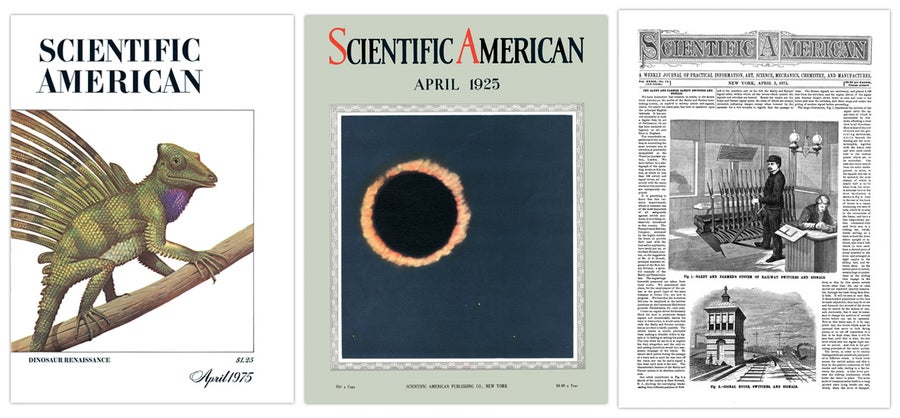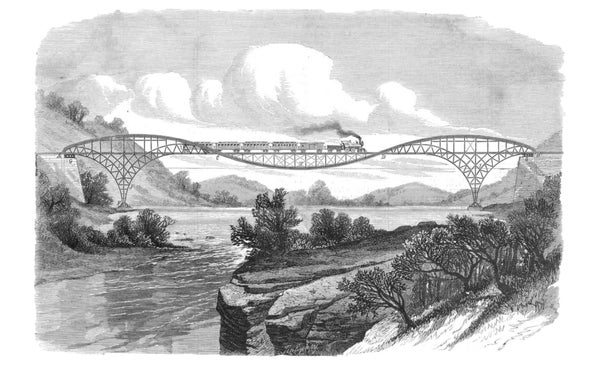1975
Mysterious Gamma Rays from Space
“As a result of the Partial Test-Ban Treaty of 1963, which prohibited nuclear explosions in space, the U.S. launched five satellites to act as monitors. Each satellite was equipped with a detector designed to respond to gamma rays from a nuclear explosion. Detectors aboard two or more satellites could determine the position of the source. When the records were examined, it was found that the detectors had been triggered by occasional bursts of gamma rays, but that the source could not possibly be anything near Earth.
On supporting science journalism
If you're enjoying this article, consider supporting our award-winning journalism by subscribing. By purchasing a subscription you are helping to ensure the future of impactful stories about the discoveries and ideas shaping our world today.
Each burst lasts about 10 seconds and does not seem to recur. An average of four bursts per year have been detected since 1967. The sources appear to be distributed randomly over the sky. Theories about their origin have proliferated. Perhaps the gamma rays were produced in events that gave rise to the radio outbursts of quasars. Or perhaps they originated in the shock waves from supernovas. Or they were associated with flare stars or X-ray sources within our own galaxy. There are even more exotic theoretical possibilities. In New Scientist, Andrew Fabian and James Pringle of the University of Cambridge remark: ‘Let us hope that the rate of discovery of new bursts exceeds the rate of production of new theories.’”
1925
Clearing Snowy Roads with T.N.T.
“Snow that buries some of the mountain roads of the western states many feet deep will make a sudden departure from its resting place in the spring if experiments with explosives result as planned. According to the American Automobile Association, T.N.T. was strung last fall along some of the localities known to drift worst. This explosive was prepared in a long tube of lead containing a ribbon of T.N.T. In the spring, when the last snowfall has occurred, the long explosive snake will be detonated, and if, as hoped, the snow instantly flies from the highway, the new method will be used on a larger scale after subsequent winters.”
Today’s Forecast: Heavy Static
“There has been an ever-growing desire on the part of broadcasters, as well as audience, to have the Weather Bureau forecast radio reception conditions just as it does the weather. Some study has been undertaken of static and its relation to weather conditions. ‘These fragmentary reports and experiences lead us to believe that radio weather forecasts, for at least a day or two in advance, may be practicable,’ states an official of the Weather Bureau. Static forecasts would be a boon to broadcasters in arranging for feature programs. And it would be a boon for listeners to know whether to have that radio party tomorrow night or the following night.”
1875
Clearing Snowy Roads with Fire
“The heavy snowfalls have brought home the great need of rapid removal from thoroughfares. We recently examined a novel invention using an intensely hot blast of flame. The machine consists of a small steam boiler, beside which another receptacle to contain naphtha is placed, located on the front portion of a low wagon, the body of which is of iron. Extending downward from the bottom of the vehicle are one or two rows of tubes. Steam jets mingle with ignited vapor and become highly superheated. The mouth of each tube emits a steady stream of flame, certainly sufficiently powerful to demolish several inches of ice or snow by merely passing over. It is proposed to put six machines on Broadway [in Manhattan] at the beginning of every snowstorm. A few people with brooms could quickly drive the water produced off toward the sewers.”
Snake-Eating Snake
“A wonderful poisonous snake has just found a home in the London Zoological Gardens. This is a snake-eating snake, called Ophiophagus, found in India, and the Andaman and Philippine Islands. It is the largest of known venomous snakes. Shortly after its arrival it was fed by the keeper, who put an ordinary English snake into its cage. The Ophiophagus quickly devoured the English snake by bolting him headfirst. In general appearance this new snake is very like a common cobra. The head is exceedingly lizard-like. The eye is exceedingly clear and bright. When disturbed it hisses loudly, and shows its temper by extruding its long, black, forked tongue, which it vibrates with marvelous celerity.”

